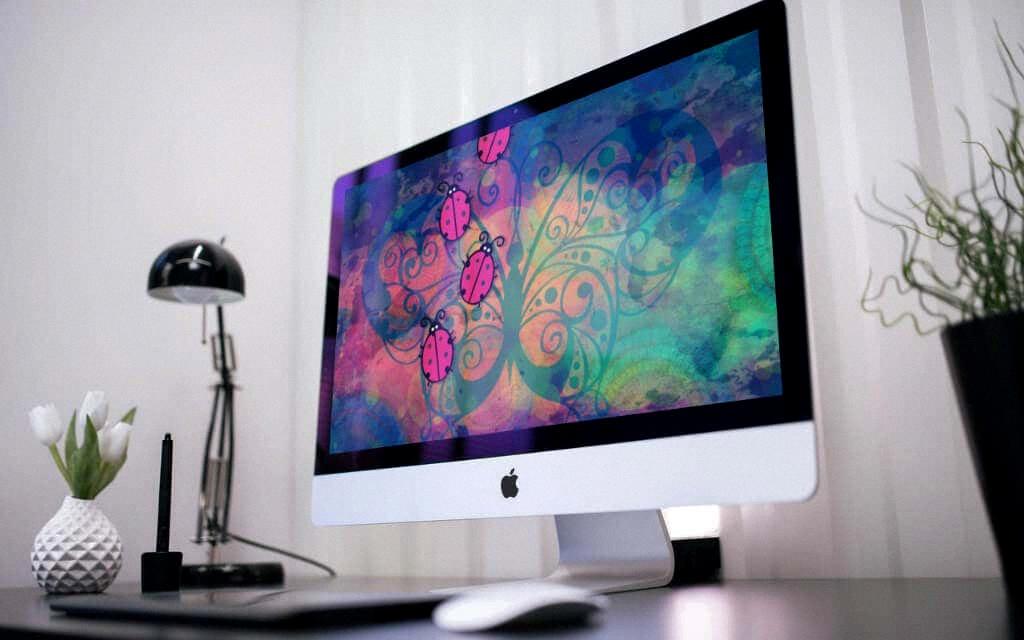The iMac is a popular desktop computer developed by Apple Inc. Known for its sleek design and powerful performance, the iMac has become a popular choice for both personal and professional use. One of the features that users enjoy is the ability to customize the screen saver. However, some users have reported an issue where the screen saver does not show photos from their Photos app.
If you are experiencing this problem, there are a few steps you can take to troubleshoot and resolve the issue. First, ensure that your iMac has an active internet connection. The screen saver relies on an internet connection to access and display photos from your Photos app.
Next, check if you have enabled iCloud Photos in the Photos app. If you have turned on iCloud Photos, photos from other devices using My Photo Stream will not appear on your iMac. In this case, you may need to disable iCloud Photos or use an alternative method to display your desired photos as a screen saver.
To change your screen saver settings on your iMac, follow these steps:
1. Click on the Apple menu in the top-left corner of your screen and select “System Preferences.”
2. In the System Preferences window, click on “Desktop & Screen Saver.”
3. Select the “Screen Saver” tab.
4. On the left side, you will see a list of screen saver options. Click on the one you want to use.
5. Click on the “Screen Saver Options” button to customize the settings for the selected screen saver.
6. Adjust the settings according to your preferences, such as choosing the photo album you want to display or setting the time interval for the screen saver to activate.
7. Click “OK” to save the changes.
Once you have customized your screen saver settings, click on the “Preview” button to check if it works as expected. If the issue persists, you can try selecting a different screen saver or restarting your iMac to see if it resolves the problem.
It is worth mentioning that Apple used to provide instructions on a support page that explained the Terminal commands necessary to set a screensaver. However, this support page is no longer maintained, and using Terminal commands may not be a viable solution for this specific issue.
If you are facing the problem of your iMac screen saver not showing photos from your Photos app, make sure you have an active internet connection and check if iCloud Photos is enabled. Additionally, customize your screen saver settings in the System Preferences to display the desired photos. If the issue persists, try selecting a different screen saver or restarting your iMac.
Why Are Your Photos Not Showing Up On Your iMac?
There could be several reasons why your photos are not showing up on your iMac. Here are some possible explanations:
1. Internet Connection: Ensure that your iMac has a stable and active internet connection. Photos from iCloud may not sync properly if your internet connection is weak or intermittent.
2. iCloud Photos: Check if you have enabled iCloud Photos on your iMac. If iCloud Photos is turned on, photos from My Photo Stream may not appear on your device. iCloud Photos syncs all your photos across devices, while My Photo Stream only syncs the most recent 30 days of photos.
3. My Photo Stream Limitations: My Photo Stream has a storage limitation of 1,000 photos. If you have surpassed this limit, older photos may not be available on your iMac. Consider using iCloud Photos or manually transferring your photos to free up space.
4. Settings: Verify that you have enabled My Photo Stream on your iMac. Go to System Preferences, click on iCloud, and ensure that the Photos option and My Photo Stream are both checked.
5. Time Delay: Sometimes, there might be a delay in syncing photos between your devices. Give it some time and check again later to see if your photos appear.
6. Software Updates: Ensure that your iMac’s operating system and Photos app are up to date. Outdated software can sometimes cause syncing issues.
7. Other Devices: If you have multiple devices linked to the same iCloud account, check if the photos are showing up on other devices. This will help identify if the issue is specific to your iMac or the iCloud account.
If none of these steps resolve the issue, you may need to contact Apple Support for further assistance.

Why is Your Screensaver Not Working On Your iMac?
There could be several reasons why your screensaver is not working on your iMac. Here are some possible causes and troubleshooting steps you can take:
1. Software Updates: Ensure that your iMac is running the latest version of macOS. Sometimes, screensaver issues can be resolved by updating your operating system.
2. Screen Saver Settings: Check your screen saver settings to make sure they are properly configured. Follow the steps outlined in the previous response to access the screen saver settings.
3. Selected Screensaver: If the screensaver is not working, try selecting a different screensaver option to see if the issue persists. Sometimes, certain screensavers may encounter compatibility issues or conflicts with other software.
4. Energy Saver Settings: Screensaver functionality can be affected by the Energy Saver settings on your iMac. Open System Preferences and click on Energy Saver. Make sure that the “Turn display off after” and “Put hard disks to sleep when possible” options are not set to a very short duration. Adjust these settings if necessary.
5. Third-party Software: If you have recently installed any third-party software or applications, they could potentially interfere with the screensaver. Try quitting or uninstalling recently installed software to see if it resolves the issue.
6. Display Sleep: In some cases, the screensaver may not activate if your display is set to sleep quickly. Navigate to System Preferences, click on Display, and adjust the “Turn display off after” option to a longer duration.
7. Hardware Issues: If none of the above steps resolve the problem, there might be a hardware issue with your iMac. Contact Apple Support or visit an authorized service center to get further assistance.
By following these troubleshooting steps, you should be able to identify and resolve the issue with your screensaver on your iMac.
Why Can’t You Use Your Photos As Screensaver On Mac?
There are several reasons why you can’t use your photos as screensaver on Mac:
1. Limited access to Photos library: When you are not logged in to your Mac, the operating system restricts access to certain files and folders, including your Photos library. This means that the screensaver cannot retrieve your photos from the library to display them.
2. Unavailability of photo sources: Mac screensavers rely on various photo sources such as your iCloud Photo Library, Flickr, or other online services. Since you are not logged in, these sources are inaccessible, making it impossible for the screensaver to fetch your photos.
3. Privacy and security concerns: Screensavers run even when you are away from your computer, and they may display personal photos that you might not want others to see. To protect your privacy and ensure the security of your files, Apple has restricted the use of photo-based screensavers when you are not logged in.
4. Terminal command limitations: Although Apple provides Terminal commands to set screensavers, these commands are primarily designed for basic screensaver functions and do not support accessing personal photo libraries or online sources.
5. System performance: Using photos as screensavers can consume a significant amount of system resources, especially if you have a large photo library or high-resolution images. To prevent any performance issues, Apple has chosen not to allow photo-based screensavers when you are not logged in.
The inability to use your photos as screensaver on Mac when not logged in is due to limited access to your Photos library, unavailability of photo sources, privacy and security concerns, limitations in Terminal commands, and the need to maintain system performance.
How Do You Fix Your Mac Screensaver?
To customize the screen saver on your Mac, follow these steps:
1. Click on the Apple menu located in the top-left corner of your screen.
2. From the drop-down menu, select “System Preferences.” This will open the System Preferences window.
3. In the System Preferences window, click on the “Desktop & Screen Saver” icon. This will open the Desktop & Screen Saver settings.
4. In the sidebar on the left side of the window, scroll down and click on “Screen Saver.” This will display the available screen saver options on the right side of the window.
5. To preview a screen saver, simply click on its thumbnail on the right side of the window. This will display a preview of the selected screen saver in the main preview area.
6. If you want to customize the settings for a specific screen saver, click on the “Options” button located below the screen saver thumbnails. This will open a new window with options specific to the selected screen saver.
7. In the Options window, you can adjust various settings depending on the selected screen saver. These settings may include the speed of the animation, the number of images displayed, the style of transitions, and more. Make the desired adjustments to suit your preferences.
8. Once you have customized the screen saver settings, click on the “OK” button to save your changes and close the Options window.
9. To set the customized screen saver as your active screen saver, simply close the System Preferences window. Your changes will automatically take effect.
By following these steps, you can easily fix and customize your Mac’s screen saver to your liking.
Conclusion
The iMac is a powerful and versatile computer that offers a seamless and intuitive user experience. With its sleek design and high-performance hardware, it is well-suited for a variety of tasks, from everyday computing to demanding professional work.
The iMac’s Retina display delivers stunning visuals with vibrant colors and sharp details, making it ideal for graphic design, video editing, and multimedia creation. Its powerful processors and ample storage options ensure smooth performance and efficient multitasking.
Furthermore, the iMac is equipped with a range of connectivity options, including Thunderbolt ports and USB-C, allowing for fast data transfer and easy connection to external devices. The integration of macOS provides a seamless ecosystem, enabling users to seamlessly sync their data and work across multiple Apple devices.
Additionally, the iMac offers a range of customization options, allowing users to choose the specifications that best suit their needs and budget. Whether you’re a professional seeking a high-performance workstation or a casual user looking for a reliable and stylish computer, the iMac offers a solution that can meet your requirements.
The iMac is a top-of-the-line computer that combines power, performance, and style. Its innovative features, advanced technology, and user-friendly interface make it a popular choice for individuals and professionals alike. Whether you’re a creative professional, a student, or a casual user, the iMac is sure to enhance your computing experience and meet your needs.








